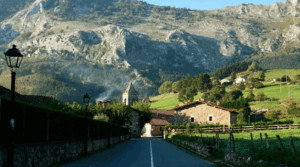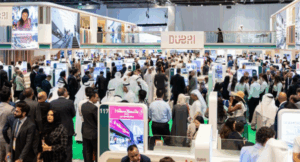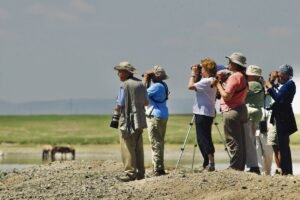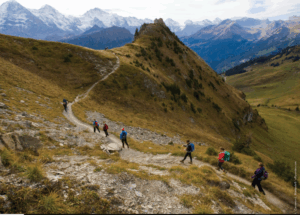Rich cultural heritage of ethnic communities
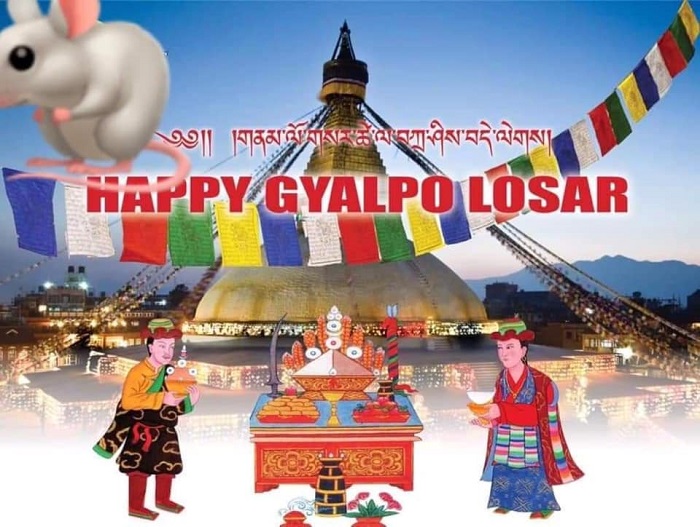
Ramesh Tiwari
Federal Democratic Republic Nepal is a multi-ethnic, multi-cultural and multi-linguistic country sandwiched between two big Asian powers – India and China. There are 125 caste/ethnic groups and 123 languages spoken as mother tongue reported in the national census 2011.Each ethnic groups living in different districts of Himalayan region, mid- hills and southern Terai region have their own language, festivals and cultural heritage. Festivals observed in the Himalayan country represent the rich cultural heritage of different ethnic communities. It is said that the people of Nepal observe more festivals than the days of the year. Nepal, where you can find numerous gods, goddesses and temples, is also known as the “Land of Festivals”.
According to the latest national census, the total population of Nepal is 26,494,504 (besides more than 2.5 million working abroad) with an annual average growth rate of 1.35 per cent. Terai constitutes 50.27 per cent (13,318,705) of the total population while Hill and Mountain constitutes 43 per cent (11,394,007) and 6.73 per cent (1,781,792) respectively. Among 125 caste/ethnic , Chhetri is the largest caste/ethnic groups having 16.6% (4,398,053) of the total population followed by Brahman-Hill (12.2% ; 3,226,903), Magar (7.1% ; 1,887,733), Tharu (6.6% ; 1,737,470), Tamang (5.8% ; 1,539,830), Newar (5.0% ; 1,321,933), Kami (4.8% ; 1,258,554), Musalman (4.4% ; 1,164,255), Yadav (4.0% ; 1,054,458) and Rai (2.3% ; 620,004).
The ethnic communities speak 123 languages as their mother tongue. Nepali is spoken as mother tongue by 44.6 percent (11,826,953) of the total population followed by Maithili (11.7%; 3,092,530), Bhojpuri (6.0%; 1,584,958), Tharu (5.8%; 1,529,875), Tamang (5.1%; 1,353,311), Newar (3.2%; 846,557), Bajjika (3.0%; 793,418), Magar (3.0%; 788,530), Doteli (3.0%; 787,827), and Urdu (2.6%; 691,546) among others.
Though Nepal is a secular country, Hinduism is the main religion of the Nepalese. Among the ten religion categories reported in the census, Hinduism is followed by 81.3 percent (21,551,492) of the population while Buddhism (9.0%; 2,396,099), Islam (4.4%; 1,162,370), Kirat (3.1%; 807,169), Christianity (1.4%; 375,699), Prakriti (0.5%; 121,982), Bon (13,006), Jainism (3,214), Bahai (1,283) and Sikhism (609). The ethnic unity and religious harmony of this Himalayan country is highly evaluated all over the world.
Hindus and Buddhists celebrate most of the religious events and festivals together including the biggest festival Dashain and Tihar( known as the Festival of Lights ).The Saarctourism.org states – Culture is embedded in the high peaks of Nepal, tradition flows with its rivers, art traverses through its valleys and religion lies in the heart of its people. Nepal is a country where art, culture and religion are a part of life of the inhabitants. The art and architecture of Nepal is deeply influenced by the religion. Unique craftsmanship can be found in temples, architecture, shrines, fountains and the design of religious objects.
A tourist finds popular festivals each month while visiting Nepal. The people of Tibeto – Mongoloid origin such as Gurungs, Rais, Sherpas and Tamangs celebrate Lhosar with pomp and show to welcome their New Year during the months of December – March each year. Being the national holidays during Lhosar, people of these communities celebrate Lhosar organizing various religious and cultural programs.
The celebration of Lhosar can be traced back to the Tibetan pre-Buddhist period (127 BC – 629 AD). Being the followers of the Bon religion, they organized special ceremony each winter offering incense to appease local spirits, deities, and protectors. Later the religious festival developed into an annual Buddhist festival called Tibetan New year, the most important festival in the Tibetan calendar. The word Losar is a Tibetan word which means New Year- Lo means ‘year’ and sar means ‘new’.
People greet each other with customary New Year greeting of “tashi delek” (good luck) and visit monasteries, stupas, shrines to make offerings and donations in form of food and other gifts to the monks and nuns there. Preparations for Losar like spring-cleaning, whitewashing of homes and hoisting of fresh prayer flags begin almost a month before the festival begins. Though the Tibetan calendar has twelve lunar months and Losar begins on the first day of the first month, preparations in the monasteries begin earlier on the twenty-ninth day of the twelfth month, a day before the Tibetan New Year’s Eve.
Tibetans wearing new attire worship the Gods by placing offerings during the New Year. The offerings consist of animals and demons made from a kind of dough called torma. The family members exchange gifts and organize reunion dinner on the New Year. Lamas join religious celebrations and worship Buddhist deities chanting Buddhist scriptures. Tibetans visit the local monasteries and pray for their good life and prosperity during the New Year celebrations.
The ethnic communities in Nepal follow the animal zodiac as of China. The Chinese animal zodiac, or sheng xiao in pinyin (literally translated as ‘born resembling’), is a rotating cycle of 12 years, with each year being represented by an animal and its reputed attributes. Traditionally these recurring animals were used to date the years, a different animal for each year, with each animal year repeated every 12 years. The 12 animal signs in order: rat, ox, tiger, rabbit, dragon, snake, horse, goat, monkey, rooster, dog and pig each represent different types of personalities.
The ethnic communities come together to celebrate Losar (New Year) at a common place and rejoice in various cultural processions, feasting and greetings. These communities celebrate Losar by organizing rallies in traditional attires and cultural programs besides visiting Buddhist shrines.
Generally, Lhosar is celebrated by the Gurung community as the Tamu/Tola Lhosar in the last week of December, by people of Tamang community as Sonam Lhosar in the second week of February and by the Sherpa and Bhote people as Gylapo Lhosar around mid-February each year. But Tamu Losar , Sonam Losar and Gyalpo Losar are celebrated on December 30 ( 2013 ) , January 31 ( 2014 ) and March 2 ( 2014 ) respectively this year. Tamu Losar is celebrated on every 15 Poush of the Nepali calendar (in December/January). As Poush 15 marks the end of winter and start of spring, Losar is traditionally celebrated for three days.
Losar is being observed by the Gurung , Tamang and Sherpa communities amidst various cultural programs . Losar marks the beginning of the year for these communities and they pray for happiness and good fortune celebrating Losar. Nepal government has declared a public holiday for the celebration of these festivals.
Like Tibetans, Sherpas in Nepal celebrate their New Year Lhosar organizing religious ceremonies, family get-together, feasts and dances while Buddhist monks pray for good health, peace and prosperity at the monasteries. Sherpas, wearing new clothes and jewelries, exchange greetings on the occasion. Buddhist
monasteries all over the country are decorated with colourful prayer flags besides Boudhanath stupa and Swayambhu Maha Chaitya in Kathmandu during Lhosar .
Sherpas welcome their New Year by throwing tsampa (roasted barley flour) into the air. Lhosar is celebrated mainly in the Buddhist highland areas and in Tibetan settlements in Kathmandu and Pokhara besides Solukhumbu and other Himalayan districts by feasting and dancing.
People of Tamang community under the Mahayan sect of Buddhist religion in Nepal and abroad celebrate Sonam Lhosar as New Year organising various programmes and exchanging best wishes with each other. The Tamang , indigenous inhabitants of the mountain regions of Nepal, predominately live in the districts of Kavreplanchowk , Sindhupalchowk, Dolakha, Rasuwa, Kathmandu, Bhaktapur, Lalitpur, Dhading, Makwanpur, Nuwakot, Ramechhap and Chitwan .
Basically, Gurungs (Tamu) are indigenous inhabitants of western, central and eastern parts of Nepal and are well known for their bravery across the world. Gurungs divide time into cycles of 12 years (lohokor), to each year of which a special name is given and is known as Barga (lho). Losar also heralds the change in ‘Lho’. According to the oriental astrological system, there are 12 lhos – garuda, serpent, horse, sheep, monkey, bird, dog, deer, mouse, cow, tiger and cat. Each year is marked by a particular animal and they are arranged in a single circle closely following the Tibetan calendar with its’ 12 animals. The 12 rotation system was used to calculate peoples’ ages earlier.
Gurungs, whose culture is represented in their Rodhighar, Chudka, Sorathi, Ghantu and Dohori , wear Bhangra, a white cloth shirt-like apparel tied across the chest and open like a bag at the back and a Kachhad while women wear maroon velvet Ghalek (blouses), with gold earrings and semi-precious stone necklaces during the Losar festival.
As some of the ethnic communities prepare to celebrate Losar each year, the indigenous Newar communities of Kathmandu valley celebrate Yomari Purnima worshipping Goddess Annapurna and eating yomari (a newari dish). It is believed that yomari is beneficial to get rid of cold, which is made by steaming rice-flour filled with brown cane sugar (chaku) and sesame seeds. Yomari Purnima is one of the most popular festivals of the community. The festival, also known as Yomari Punhi, falls on Mangsir Sukla Purnima (full moon day in December) each year.
Similarly, Kirat community observes the Sakela Ubhauli festival during this period. The Rai, Limbu, Yakkha and Sunuwar of Bhojpur, Khotang, Dhankuta, Dharan, Biratnagar, Kathmandu and Lalitpur celebrate the festival.The Kirati communities of Kathmandu assemble in Hattiban to celebrate the festival where they worship , feast and enjoy with Sakela dance.
The festivals of the Kirat community – Udhauli and Ubhauli -highlight the agricultural lifestyle of the Kirat people. Since it is public holiday on Baishakh Purnima and Mangsir Purnima ( Udhauli and Ubhauli festivals ), people of the community celebrate this festival organizing different programs .
As Nepal is regarded a beautiful garden of more than a hundred ethnic groups, each ethnic community has its own festivals and cultural heritage. Festivals of the ethnic communities are a national heritage and should be preserved for centuries.
January 2020


